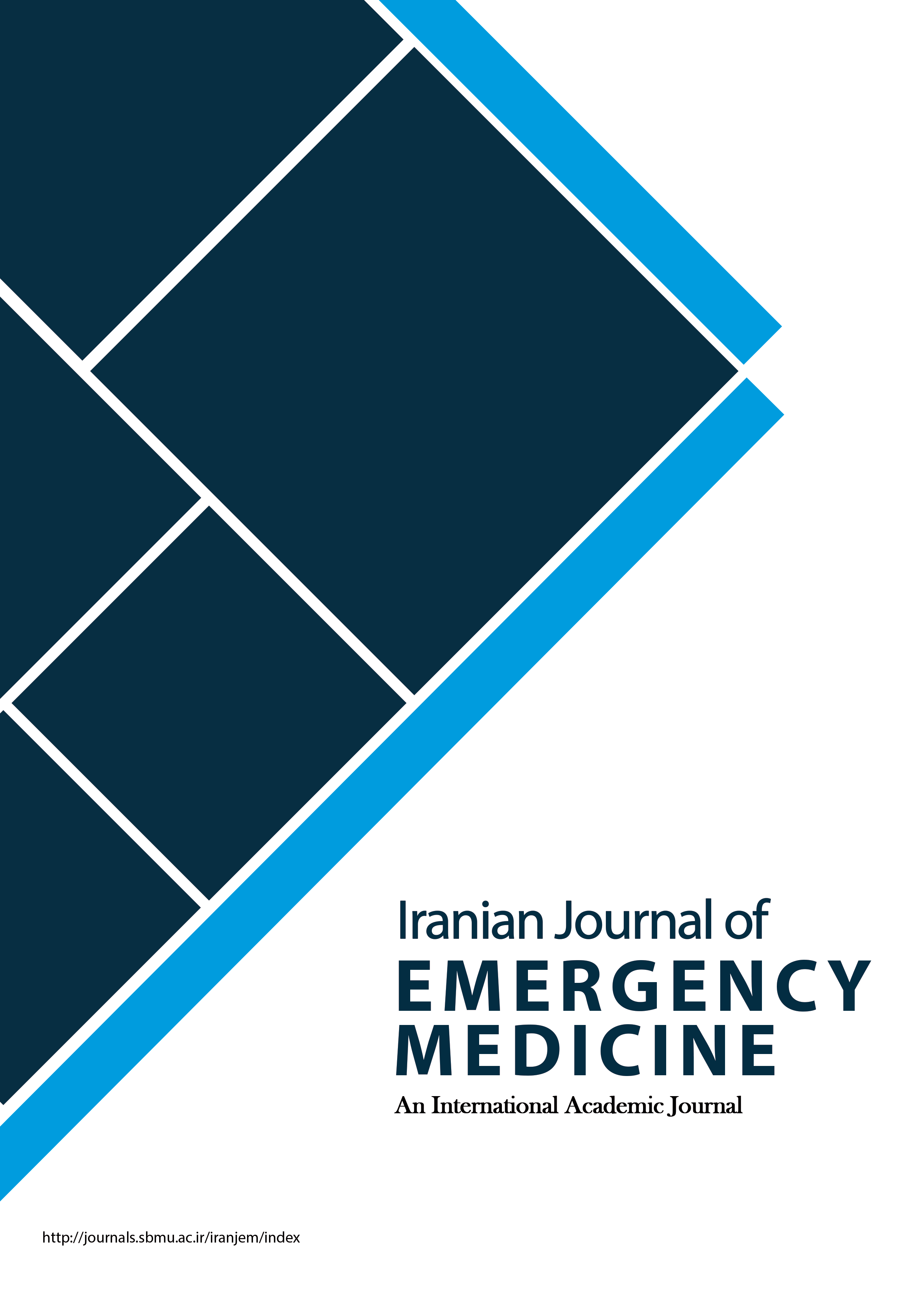Predictive Factors of Hospitalization and Dialysis Requirement in Alcohol Poisoning; a Cross-Sectional Study
Iranian Journal of Emergency Medicine,
Vol. 2 No. 1 (2015),
28 Esfand 2015,
Page 11-19
https://doi.org/10.22037/ijem.v2i1.6901
Introduction: Alcohol abuse is one of the health problems that all societies have involved with. Although in Iran the percent of alcohol consuming due to social and cultural preventions is lesser that other countries, its outcome and predictive factors are not accessible. Thus, this study was designed with the aim of determining the consequences of alcohol consuming and finding its effective factors in Tabriz. Method: This cross-sectional study has been done through September 2013 to July 2014 in Sina Hospital, Tabriz, Iran. All individuals with alcohol poisoning referred to the emergency department were included in the study. Demographic and clinical factors of patients, laboratory tests, dialysis and hospitalization in hospital wards were evaluated. Finally, independent effective factors for dialysis and hospitalization were assessed by using multivariate logistic regression.Results: At the end, 81(91.4% male) patients with the mean age of 27.9±10.4 years were entered to the study. Ten (12.3%) patients needed dialysis and 34 (42.0%) were hospitalized. Increasing the serum creatinine level (OR-1.6; 95% Cl: 1.004-2.4; p-0.048) and time interval between consumption until referring to the emergency (OR-1.1; 95% Cl: 1.03-1.15; p-0.004) were the independent predictive factors of dialysis. Also, predictive agents of hospitalization included smoking (OR-3.4; 95% Cl: 1.6-5.5; p-0.01) and need to do dialysis (OR-7.9; 95% Cl: 5.4-10.5; p<0.001). Conclusion: In the present project 12.3% of patients needed dialysis. Increasing the serum creatinine and time interval between alcohol consuming until referring to the emergency were the most important predictive factors. In addition, the probability of hospitalization for smoking and dialyzed poisoned persons in hospital wards was more than other patients.



